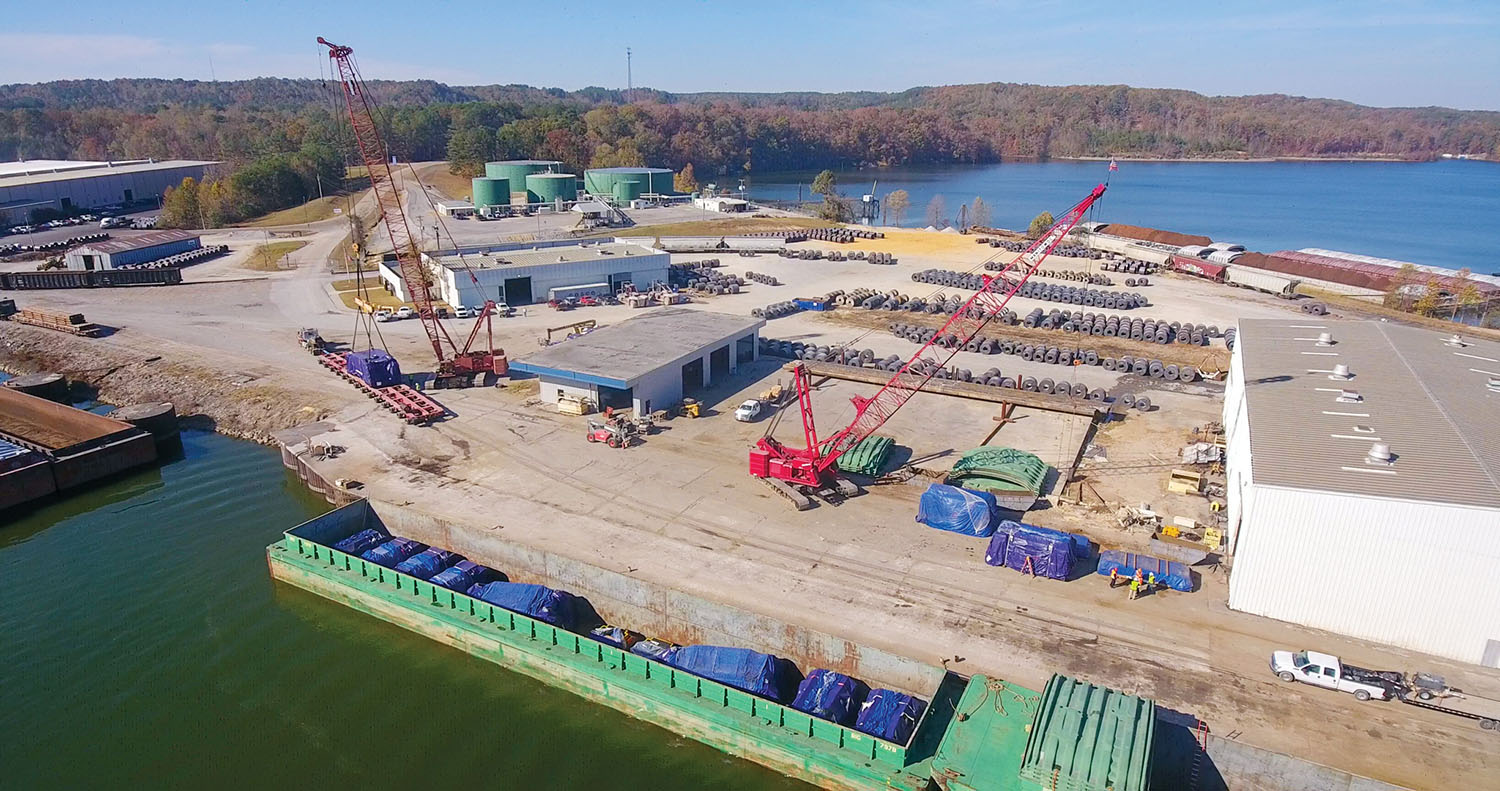While low-water conditions have hampered transit on the Lower Mississippi River for months, the Tennessee-Tombigbee Waterway is not dealing with the same circumstances.
Mitch Mays, administrator of the Tennessee-Tombigbee Waterway Development Authority, said he wanted to stress the difference for those who might not understand that the Tenn-Tom is controlled by locks and dams, which help minimize low-water conditions when there is not enough rainfall.
“We do not have low water on the Tenn-Tom,” Mays said. “Commerce is moving. All of our locks and dams are operational. We don’t have any holdups on the Tenn-Tom, so from Paducah, Ky., all the way to Mobile, Ala., commerce is moving normally.”
The 234-mile waterway, which opened for business in January 1985, provides an alternative option for river transport to the Gulf of Mexico. It includes an artificially made connection between the Tennessee and Tombigbee rivers, allowing commercial navigation of the entire system via 10, 110-by-600-foot locks.
In some cases, depending on where cargo is moving, transit to the Gulf via the Tenn-Tom may be shorter, Mays said. The waterway moves an average of 6.5 to 7 million tons of cargo annually along its entirety, with much more, about 20 million tons a year, on the lower portion.
“We have a tremendous amount of capacity still available to traffic on the Tenn-Tom,” Mays said.
In some cases, freight that was intended to move via the Mississippi has moved onto the Tenn-Tom this year because of low water on the Mississippi, he said.
Robert Dexter, executive director of Yellow Creek Port, with terminals at Burnsville (Tenn-Tom Mile 435) and Iuka (Tenn-Tom Mile 448), said equipment for the new battery plant the Ford Motor Company is building in Haywood, Tenn., is an example. The first two barges of Chinese-made equipment were en route on the Mississippi when they were unable to transit through Memphis, Tenn. Instead, they were rerouted via the Tenn-Tom. Three more barges of equipment were moved from New Orleans to Mobile and up the Tenn-Tom to the port. Both shipments arrived in the last week of October and were discharged at the ports, with 21 pieces unloaded in Burnsville and 17 in Iuka. That equipment was then hauled to the jobsite beginning November 7.
“It’s been good for the Tennessee-Tombigbee Waterway because now we’re getting calls from other suppliers,” Dexter said.
He said he should know by the end of the year if more equipment for the plant, slated to arrive in March or April, will come through the port.
Before having to look for alternatives because of the low water on the Mississippi, “They had no idea we could do this kind of work,” Dexter said.
Mays said many of the people he has spoken with assumed that the Tenn-Tom was facing similar or worse conditions as the Lower Mississippi and was surprised to hear that was not the case, so he wanted to get the word out.
“Other companies are beginning to notice there are issues on the Mississippi, so they’re using the Tenn-Tom to bring equipment and cargo through our waterway to bring it where it needs to go,” he said.
That is especially true for companies moving cargo in Kentucky and Tennessee that might normally bring products down the Ohio River to the Mississippi instead.
Mays hopes some of those companies continue to consider the Tenn-Tom for their future needs, adding that it is always a good idea for business and industry looking to move freight to have an alternate route built into their cargo plans. He thinks the Tenn-Tom makes sense for those looking to continue to take advantage of the benefits of waterborne transportation.




